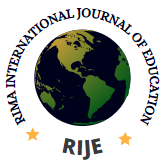Exploring Database Accessibility and Usage among Undergraduate Students in Katsina State University Libraries
Usman Abdulkadir Umar, Mohammed Tukur Tokawa, Sadiq Abdulkadir Batagarawa & Sani Abdu Fari
Department of Library and Information Science, Umaru Musa Yar’adua University Katsina Nigeria.
Abstract
This study investigates the accessibility and utilization of databases by undergraduate students in Katsina State University libraries. Its goal is to assess the extent to which undergraduate students can access and use databases in these libraries. Using a quantitative approach, the research employed a cross-sectional descriptive survey design, targeting a total population of 200 undergraduate students. Questionnaires were distributed, with 178 collected, representing an 89% response rate. The findings of the study indicate that databases such as JStore, Elsevier, E-Granary, and AGORA are readily accessible to undergraduate students in the university libraries under study. Surprisingly, Science Online was found to be very easily accessible by 64(8.0%), respondents while 68 (38.9%) respondents did not provide any comments on its accessibility. Regarding the utilization of databases, the study reveals that digital library resources, JStore, AGORA, and PubMed are utilized on a daily, weekly, or bi-weekly basis. On the other hand, databases like AGORA, WASH LAW, WorldCat, and SpringerLink are utilized quarterly. Moreover, it was found that MC Graw Hill and Elsevier are among the databases that students utilize the least. The primary factors impeding the usage of databases are identified as inaccessibility, which consequently leads to low levels of utilization among students.
Keywords
Accessibility, Utilization, Databases. Undergraduate students, Libraries
Reference
Association of Research Libraries. (2019). Accessibility of Library Services. https://www.arl.org/programs-services/diversity-inclusion/accessibility-library-services/
Dewald, N. H., & Randles, J. M. (2018). How Librarians Use and Help Researchers Use Zotero. The Journal of Academic Librarianship, 40(3-4), 324-331.
Imo Marti, M., & García-Sanjuán, S. (2017). Assessment of the user experience of the main academic library databases. Information Processing & Management, 58(3), 102464.
Krejcie, R. V. & Morgan, D.W. (1970). Determining Sample Size for Research Activities. Educational and Psychological Measurement. Vol. 30, p. 607 – 210.
Kuhlthau, C. C., Heinström, J., & Todd, R. J. (2008). The “Information Search Process” Revisited: Is the Model Still Useful? Information Research: An International Electronic Journal, 13(4), 2-4. https://www.informationr.net/ir/13-4/paper355.html
Lu, Y. (2017). Accessibility of library databases: a case study of a university library. The Electronic Library, 35(6), 1065-1079. doi: 10.1108/EL-06-2016-0121.
Oriogu and et al (2017). “Faculty Awareness, Perception and use of Information Resources and Services in a Private University in Nigeria”. Covenant Journal of Library & Information Science, pp. 32-44.2018
Pathshala, J. E. (2017). Electronic Databases in Social Science: A Gateway to all Postgraduate Courses. India: Rohan Publisher Limited.
Urhiewhu, L.O & Omah, J. E. (2016). Levels of Electronic Information Resources Usage among
Undergraduate Students in Taraba State University Library. International Journal of Information and Technology (ASPL Journal series), 2(1) 1-12 Retrieved April 8, 2020, from http://www.africaresearchcorps.com
Uzomba, U., Oyebola, T. & Izuchukwu, W., (2018) “The Use and Application of Open-Source Integrated Library System in Academic Libraries in Nigeria: Koha Example”. Library Philosophy and Practice (e-journal) Paper 1250.
Young, J. R., & Nevius, M. S. (2017). Exploring the Information Seeking Behaviors of Education Doctoral Students. Journal of Academic Librarianship, 43(2), 125-131.
